JUST FOR FISH
Catch More - Explore More - Enjoy More.
JUST FOR FISH
Catch More - Explore More - Enjoy More.
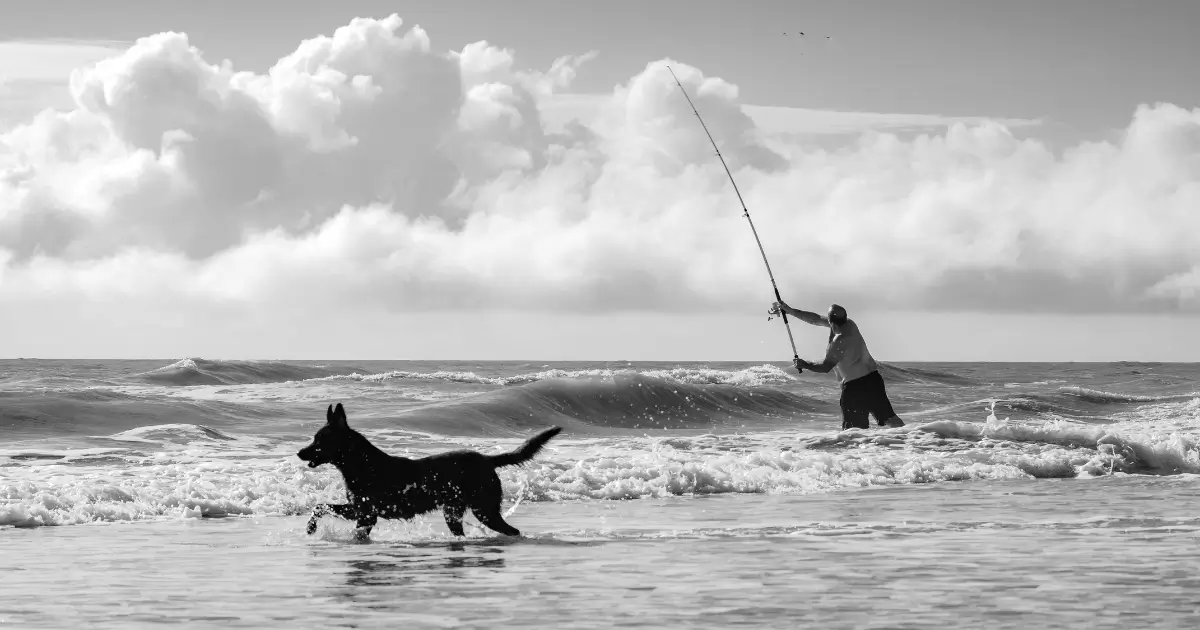
Surf fishing is truly captivating – the sea breeze, the waves, and the excitement of catching a fish right by the shore. It’s a favorite activity for those who love the coast. This guide will help you become a pro at surf fishing, no matter your skill level.
Surf fishing lets anglers cast their lines into the ocean. It’s a fun way to catch different species. Knowing the basics can help you catch more fish.
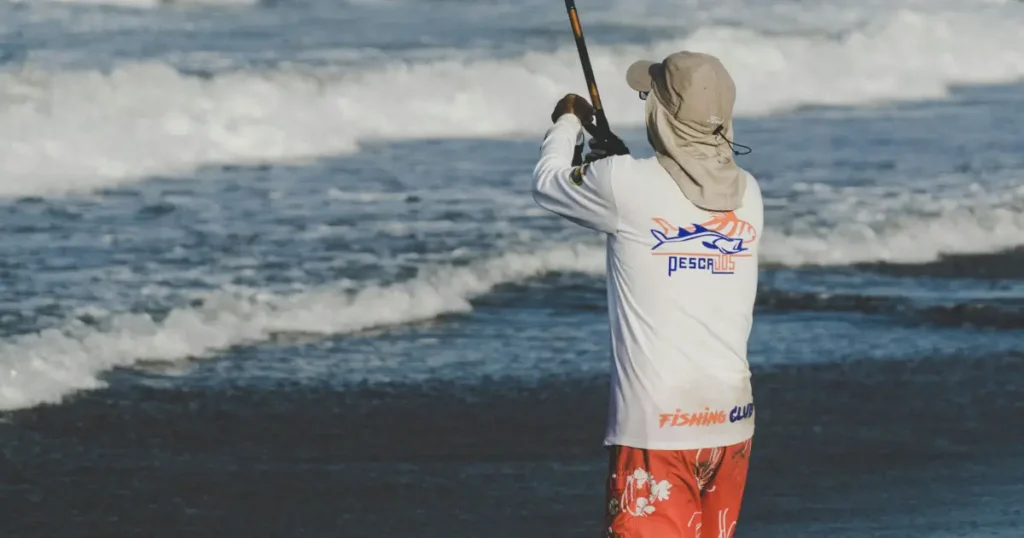
The best time to when should i fish the surf depends on several things. Tidal patterns, weather, and fish behavior are key. The rising and falling tides, and dawn and dusk, are usually the best times. Also, watching the moon and wind can help find the best surf fish times.
To fish the surf well, you need to know the beach and water. Look for underwater ledges, sandbars, and troughs. These spots are where fish like to hunt. Also, watch the current and any rip currents. They can tell you where fish might be.
Learning the basics of surf fishing can make you better. Knowing the best times, understanding the beach and water, and knowing what fish to look for will help you catch more.
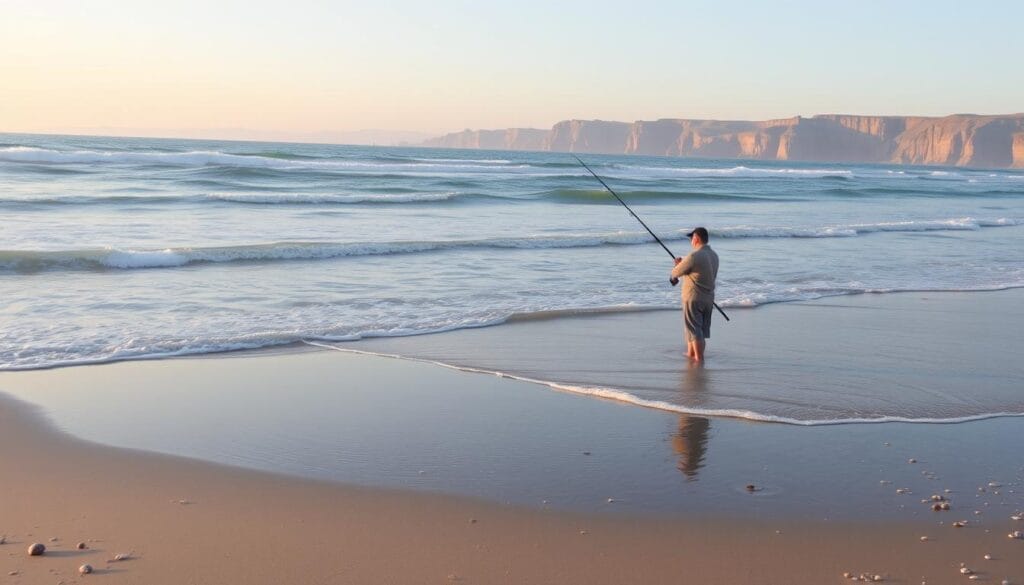
Surf fish is all about the right gear and setup. You need the perfect rod and reel combo, the right terminal tackle, and bait. Each piece is key to a great surf fishing day.
Your Surf fish starts with a good rod and reel combo. Look for a long rod, 10 to 12 feet, and a reel that can handle the surf. Think about line capacity, gear ratio, and drag when picking your reel.
Terminal tackle, like hooks and leaders, is vital. Choose durable, saltwater-safe gear. For bait, live or cut bait like shrimp and clams work well for many fish.
Don’t forget essential accessories like sand spikes and surf carts. Sand spikes keep your rod steady, and surf carts help carry your gear. Waders let you wade into the water and reach good fishing spots.
Consider a popping cork for surf fishing. It mimics baitfish, drawing in predators like bluefish and pompano.
Getting the right surf fish setup boosts your chances of catching fish. With the right gear, your beach fishing trip will be both fun and successful.
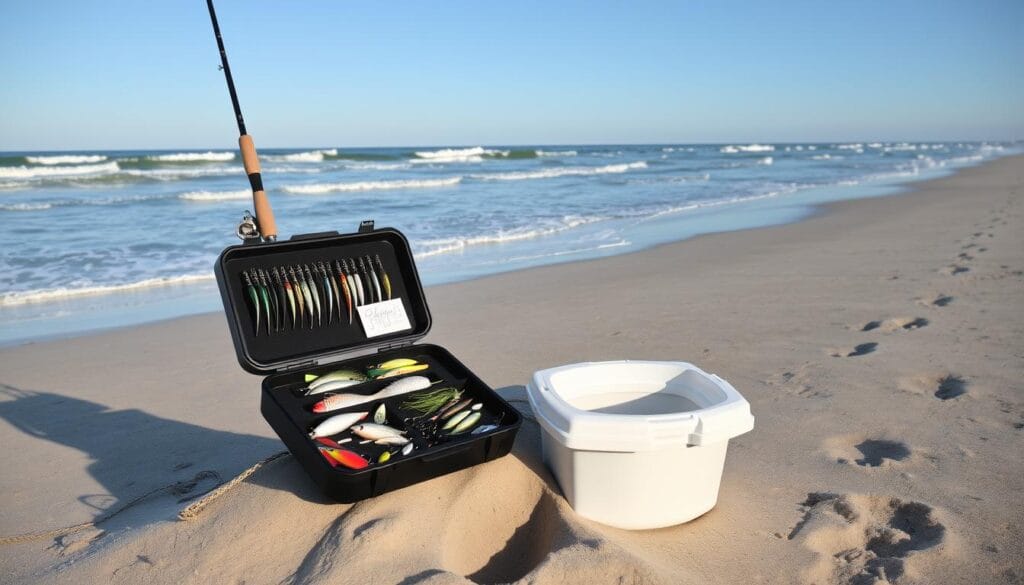
Learning how to surf fish means knowing the best ways to fish. This includes how to cast, present bait, and catch fish. Using the right methods can greatly improve your chances of catching fish on the beach.
The pendulum cast is a key technique. It lets you cast your line far into the surf while keeping control. By holding your rod at a 45-degree angle and using the sinker’s weight, you can reach far-off sandbars and good fishing spots.
It’s also crucial to know where fish are likely to be. Look for areas with the right water patterns, current breaks, and underwater features. Adjusting to changes in tides and weather is also important for surf fish success.
How you present your bait is vital in how to surf fish. Using the Carolina rig and fish-finder rig can make your bait look natural. This can attract fish more easily. Also, trying different baits like live shrimp, cut bait, and artificial lures can help catch more species.
| Technique | Description | Key Benefits |
|---|---|---|
| Pendulum Cast | Propelling the line far into the surf while maintaining control and accuracy | Reaches distant sandbars and prime fish-holding structures |
| Carolina Rig | Natural, drift-like bait presentation that entices wary fish | Effectively targets a variety of surf zone species |
| Fish-Finder Rig | Allows the bait to move freely while maintaining a secure hook set | Enhances the natural movement of the bait, triggering strikes |
By learning these surf fishing techniques, you can improve your fishing skills. This way, you can catch more fish from the beach.
Finding the best spots for surf fish is key to success on the beach. Anglers who know the best places often catch more fish. Here are some tips to help you find the best spots for your next surf fishing trip.
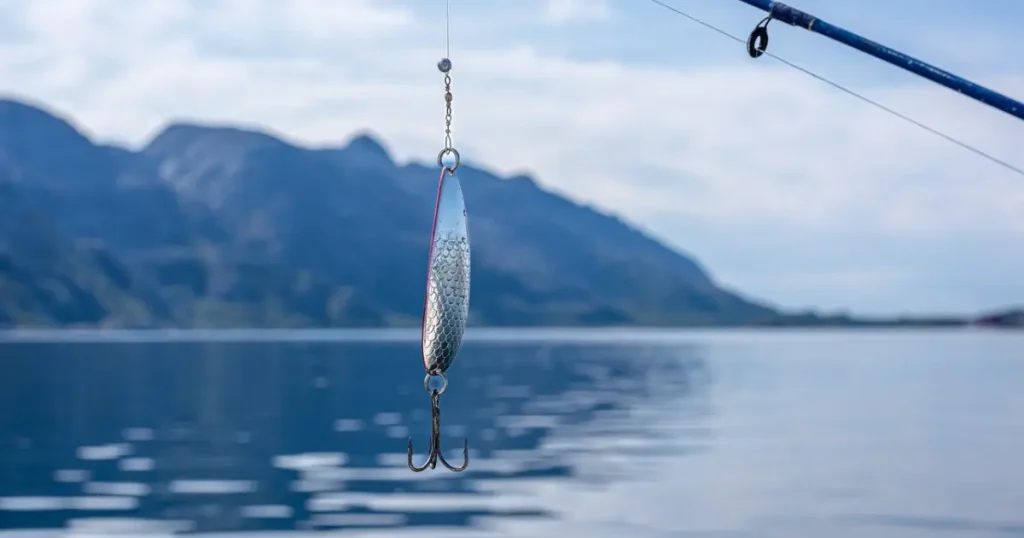
When looking for a beach to fish, search for key features. Look for sandbars, troughs, and rip currents. These areas attract fish because they offer shelter and ambush points.
Sandbars provide a home for baitfish. Troughs and rip currents funnel baitfish, making them easy prey for predators like striped bass and bluefish.
The best surf fishing spots change with the seasons. Fish move with water temperatures and baitfish. In the Northeast, striped bass and bluefish are closer to shore in spring and fall.
But they move offshore in summer. Being flexible and changing your spots with the seasons is crucial for success.
Starting your surf fishing adventure? This guide has given you the basics and tips to get started. You now know how to read the beach and water patterns. This knowledge helps you catch different species in the surf zone.
Whether you’re new to surf fishing or have been doing it for years, this surf fishing guide is for you. It offers advice on gear, tackle, and techniques. Follow these tips to catch big fish and enjoy the surf.
When you go to the beach, be ready for a challenge. Enjoy the calm of the coast and the thrill of fighting big fish. With this guide’s help, you’ll become a skilled surf fish enthusiast. You’ll learn to navigate the coast and enjoy this exciting sport.
The best times for surf fishing are during the incoming and outgoing tides. Also, dawn and dusk are great when fish are most active. Watch the weather, as calm surf and moderate wind are best.
For surf fishing, use a sturdy 7- to 10-foot rod with a high-capacity spinning reel. The reel should have 20- to 40-pound test line. Your tackle should include a fish-finder or Carolina rig, along with lures, bait, and accessories like swivels and sinkers.
To cast well in the surf, use an overhead or pendulum cast. This helps with distance and accuracy. Adjust your stance and power based on wind and waves. Practice on the beach to get better.
Target species include striped bass, bluefish, redfish, pompano, and flounder. The best species vary by region and season. These fish are often found in the surf zone, offering exciting fishing.
Yes, popping corks are effective, especially for speckled trout and redfish. Their erratic action attracts fish and keeps the bait at the right depth.
Top spots include the Outer Banks in North Carolina, the Gulf Coast of Florida, New Jersey, and the Pacific coast of California and Oregon. Always check local rules and access points for the best spots.